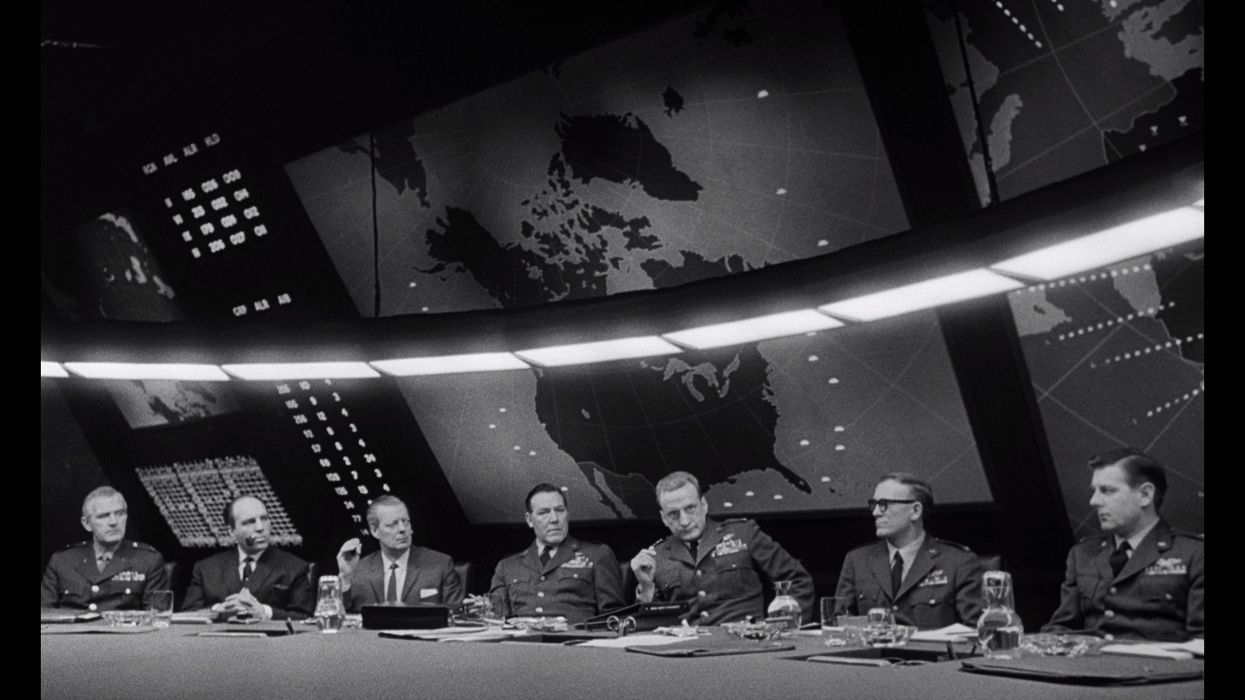'It Was Nerve-Destroying': Legendary Set Designer Ken Adam Recalls Working with Kubrick

Set design is one of the most complicated elements in film. Ideally, it's meant to serve the story and not call attention to itself, while still adding to the mood of the movie. In the second half of the 20th century, perhaps no set designer has been more influential than Sir Ken Adam: his set design on several James Bond films helped establish a cinematic aesthetic for the 60s, and his work on Stanley Kubrick's Dr. Strangelove cemented his place in cinema history. Kubrick and Adam would later collaborate on Barry Lyndon, for which Adam won an Oscar, and now he's given an interview to the BBC on his work with the legendary director.
In 1962, Adam was the set designer for the James Bond film Dr. No, and his innovative work caught the eye of a young Stanley Kubrick, who commissioned Adam for his next film, Dr. Strangelove or: How I Learned to Stop Worrying and Love the Bomb, a farce about accidental nuclear war.
Adam's war room set, where the bumbling leaders of the free world attempt to stop the impending apocalypse, is a nightmarishly cold and futuristic vision of the Cold War, and stands today as one of the great achievements in set design. Adam describes meeting Kubrick in the BBC interview:
We were sitting across a table in the living room, and all the time we were discussing Strangelove, I was doodling. Immediately Stanley was fascinated by my doodles so we got on like a house on fire -- At first I thought well this is amazing: here is a man who is supposed to be one of the most difficult directors ever and he accepts everything I've designed. All I have to do is hand it to the art department and they will get cracking.
It didn't take long, though, for Kubrick to show his famously perfectionist side:
It came as a big shock when two or three weeks into filming I realised Stanley wasn't so easy-going after all. I'd designed the war room as a split-level set with actors on each level but he came to me and said, "Ken what the hell am I supposed to do with 60 people on the upper level? They're standing around with egg on their faces doing nothing -- get rid of the upper level." I said: "Stanley, now you tell me. But of course he was right."
By the end of the shoot, Adam had resolved to never do another Kubrick film, but a decade later, he got another call, this time for Kubrick's epic historical drama, Barry Lyndon:
It was Stanley sounding like a little New York boy: he said the designer hadn't worked out and he needed me. He schmoozed me into doing the film and I was never happy about it -- we'd have big arguments because I would say: "No that's Victorian but the film is set in Georgian times." Well Stanley was so competitive that he bought almost every book available on Georgian architecture so he could argue with me. But none of this was getting the movie made because the buildings and peaceful locations he wanted just don't exist anymore near London -- It was nerve-destroying. But after five months I got Stanley to switch production to the Republic of Ireland -- which I thought was my masterstroke.
The film's production was so intense, though, and Kubrick such a task-master, that Adam had to leave and check himself into a hospital, the victim of a nervous breakdown. But all of his work was worth it, and he won an Oscar for his lush work on the film.
Adam was knighted in 2003, the first time a film production designer was given such an honor. He also recalls probably the greatest compliment of his career:
I was in the States giving a lecture to the Directors Guild when Steven Spielberg came up to me. He said 'Ken, that War Room set for Strangelove is the best set you ever designed'. Five minutes later he came back and said, 'no it's the best set that's ever been designed'."
What do you think? Are you a fan of any of Adam's other work, and what role do you think Adam's set design contributed to these films? As an indie filmmaker, how do you use set design in your films, working on a budget? Let us know!
Link: Kubrick recalled by influential set designer Sir Ken Adam -- BBC News











